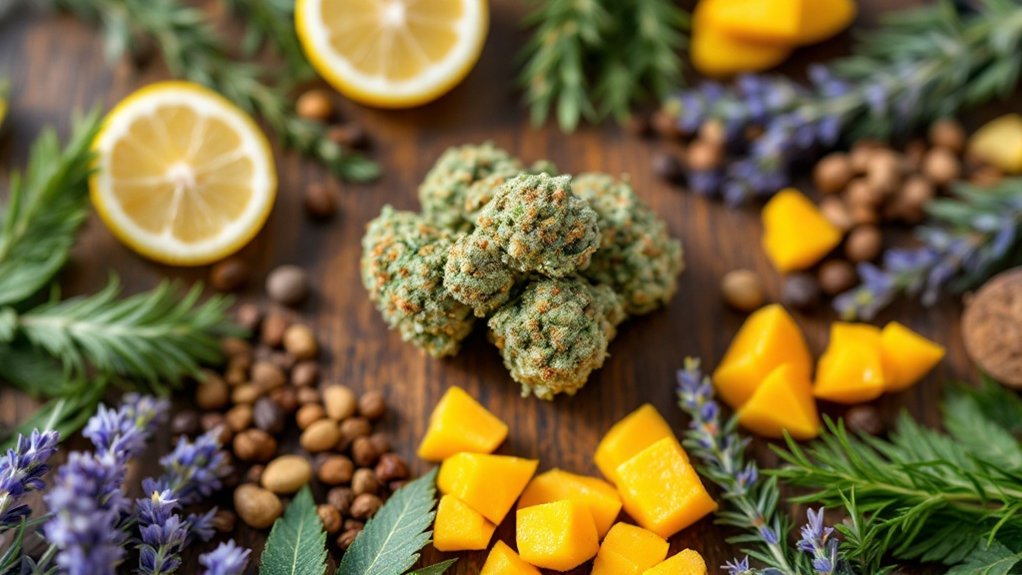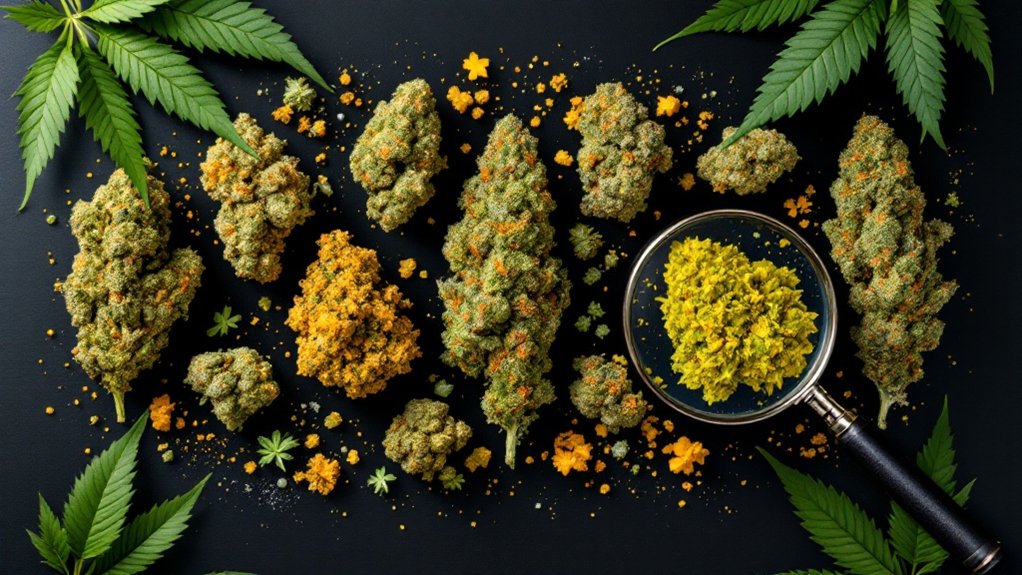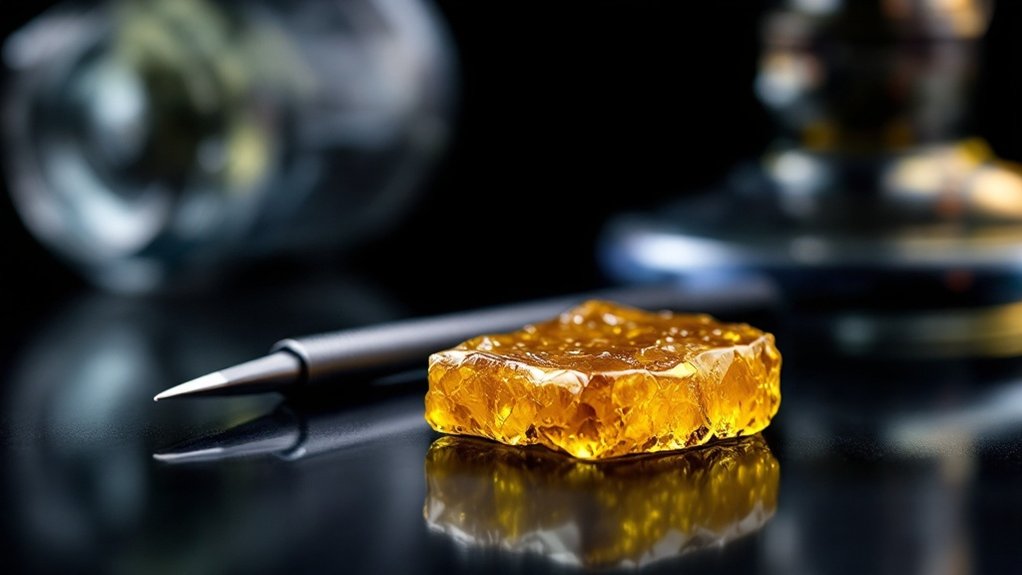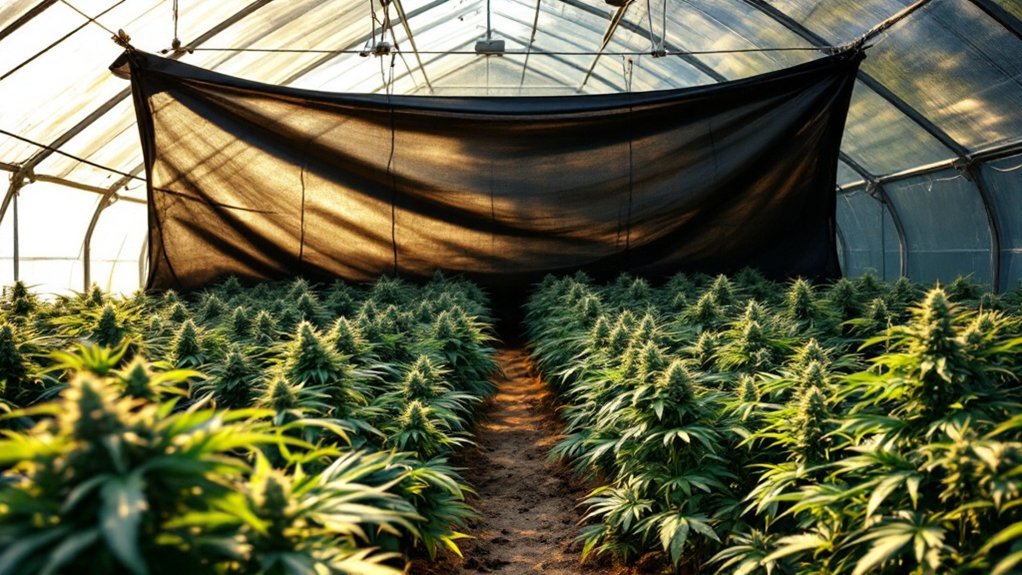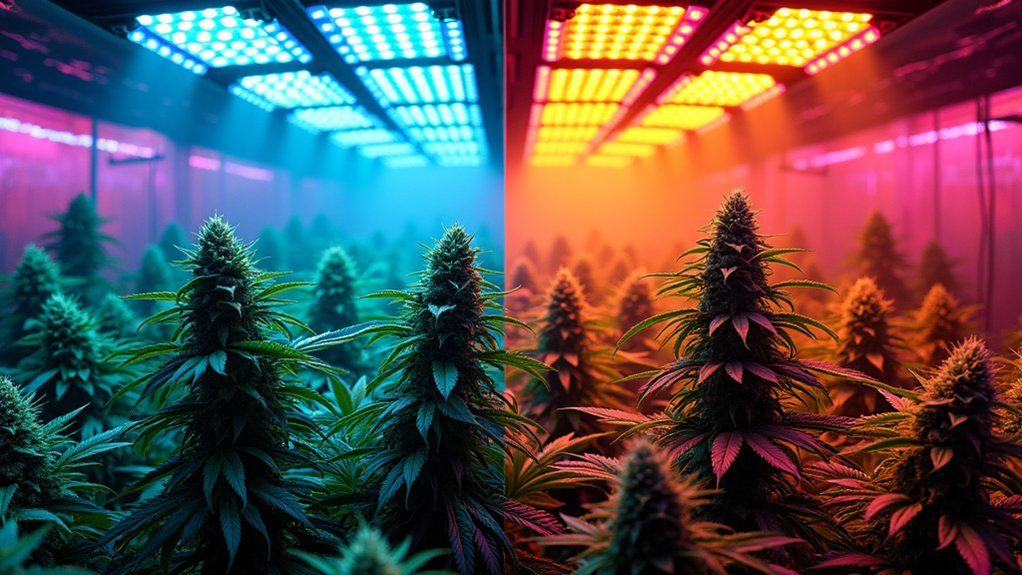Terpenes are aromatic compounds giving cannabis its distinctive smells. Over 100 identified so far. They’re not just for show. Myrcene brings that couch-lock effect, while limonene offers citrusy mood boosting. Pinene smells like forests and might counter THC-induced memory issues. Linalool? Floral and calming. Caryophyllene delivers that spicy kick with pain relief potential. Together with cannabinoids, they create the “entourage effect.” The cannabis experience goes way beyond THC percentages.
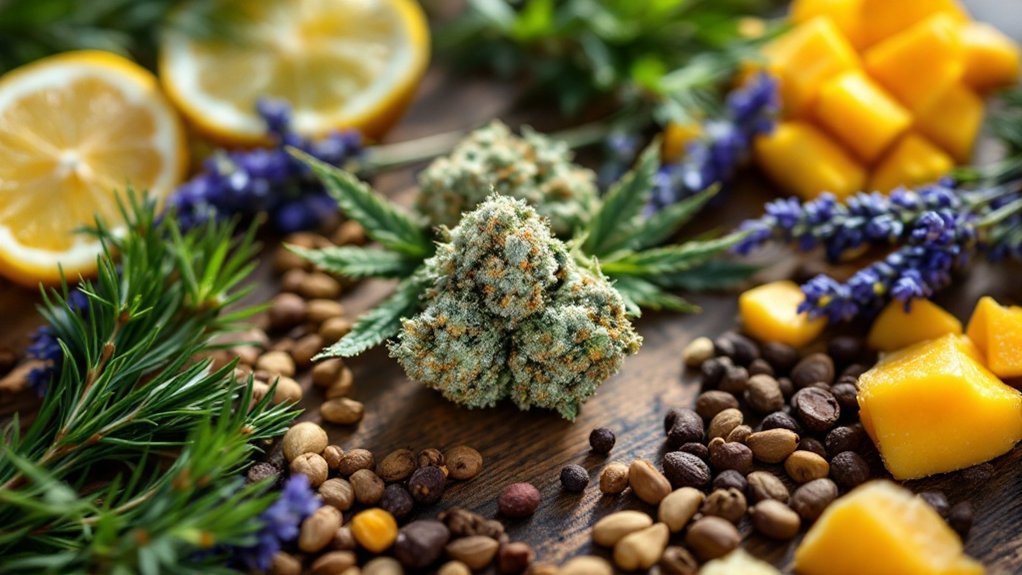
The nose knows. When cannabis consumers detect hints of lemon, pine, or lavender in their favorite strains, they’re experiencing terpenes at work. These aromatic compounds – over 200 identified in cannabis, do more than just smell pretty. They’re chemical powerhouses responsible for the distinctive scent profiles that make Lemon Haze smell nothing like Girl Scout Cookies.
Terpenes speak a complex aromatic language, turning each cannabis strain into its own unique sensory conversation.
Terpenes aren’t exclusive to cannabis. They’re everywhere in nature, from mangos to pine needles. But in cannabis, they’re superstars in the “entourage effect” working alongside cannabinoids to enhance or modify effects. Not just pretty smells. Functional compounds.
Myrcene dominates the cannabis terpene world, present in nearly half of all strains. That earthy, musky aroma? That’s myrcene talking. It’s the compound behind the infamous “couch-lock” effect. Blame it for those lost afternoons.
Citrus lovers gravitate toward limonene-rich strains like Wedding Cake. The uplifting, mood-enhancing effects aren’t just your imagination. Science suggests limonene has legitimate anti-anxiety properties. Feeling stressed? There’s a terpene for that.
Pinene brings that classic forest smell to strains like Blue Dream. It’s nature’s alertness booster, potentially counteracting some of THC’s less desirable side effects. Memory issues from cannabis? Pinene might help.
Lavender fans will recognize linalool instantly. Present in strains like Amnesia Haze, this floral compound delivers calming, anti-anxiety effects. No wonder it’s valued as a sleep aid.
Caryophyllene stands out from the terpene crowd. It’s the only one known to directly interact with human endocannabinoid receptors. That spicy, peppery note in Girl Scout Cookies isn’t just flavor – it’s potential pain relief.
Lesser-known terpenes like humulene, terpinolene, ocimene, phytol, and eucalyptol round out the aromatic orchestra. These compounds naturally protect the plant against predators while simultaneously attracting beneficial pollinators in the wild. Cannabis enthusiasts seeking precision in experiences can use a dry-herb vaporizer to taste different terpenes at various temperature settings. Each contributes unique notes and effects to the symphony of cannabis experiences.
Next time that distinctive cannabis scent hits your nostrils, remember: you’re not just smelling a plant. You’re experiencing a complex chemical language. The terpenes are talking. Are you listening?
Frequently Asked Questions
Can Terpenes Be Harmful or Cause Allergic Reactions?
Terpenes can indeed cause harm, especially when heated to high temperatures.
Dabbing? Creates toxic byproducts like benzene. Not great.
Allergic reactions can happen too – skin irritation, breathing problems, headaches. Some folks are more sensitive than others.
Science is still catching up on the long-term effects. Regulatory bodies consider them safe in foods, but concentrated cannabis use? Different story.
Ventilation helps reduce risks. Individual responses vary wildly.
How Are Terpenes Extracted From Cannabis Plants?
Terpenes are extracted from cannabis using several methods.
Traditional approaches include steam distillation and cold pressing. Pretty straightforward stuff.
Advanced techniques? Subcritical CO2 extraction and cold-hydrocarbon methods preserve those delicate compounds better.
Some producers use solvent-based extraction with acetone, methanol, or ethanol.
Temperature control is essential throughout. Freeze the plant material first, and you’ll trap more terpenes. Low temps equal more aroma. Simple chemistry.
Do Synthetic Terpenes Provide the Same Effects as Natural Ones?
Synthetic terpenes mimic natural ones but fall short in replicating complete effects. The lab-made versions copy specific profiles but lack the full spectrum found in outdoor-grown cannabis.
Different production methods matter. Science shows sun-grown plants contain more variety and quantity of terpenes than indoor crops.
Health impacts? Still unclear. Long-term effects of synthetic versions remain unknown.
The natural ones? Proven anti-inflammatory and anti-microbial benefits.
Can Terpenes Be Detected in Drug Tests?
Terpenes don’t trigger positive drug tests.
Standard screenings target cannabinoids like THC, not the aromatic compounds found in everything from mangoes to pine trees.
With over 20,000 terpenes in nature, testing for them would be ridiculous, practically everyone would fail!
While cannabis-derived terpenes might contain trace cannabinoids, pure isolated terpenes won’t show up.
Modern testing technology easily distinguishes between these compounds.
No need to sweat your lavender essential oil habit.
How Long Do Terpenes Remain Stable in Cannabis Products?
Terpenes don’t hang around forever. Under ideal conditions, properly stored cannabis products can maintain stable terpene profiles for up to 12 months. That’s it. The clock is ticking from day one.
Oxygen, light, and heat? Absolute terpene killers. Some genetics fare better than others, with certain strains containing natural preservatives like myrcene and limonene.
Industry testing confirms what users already know—those delightful aromas fade. Sometimes dramatically.
